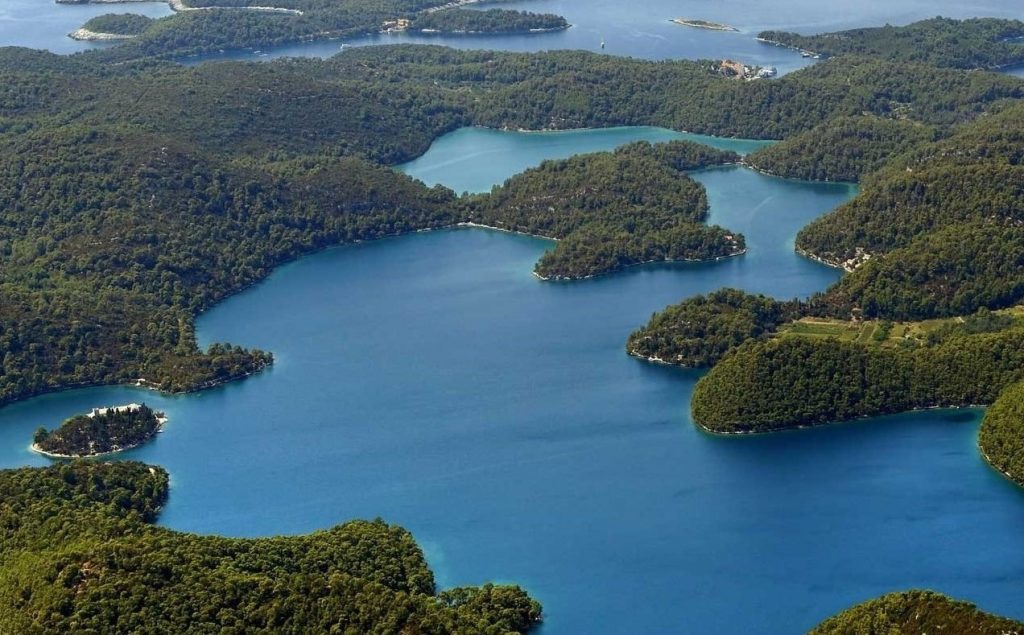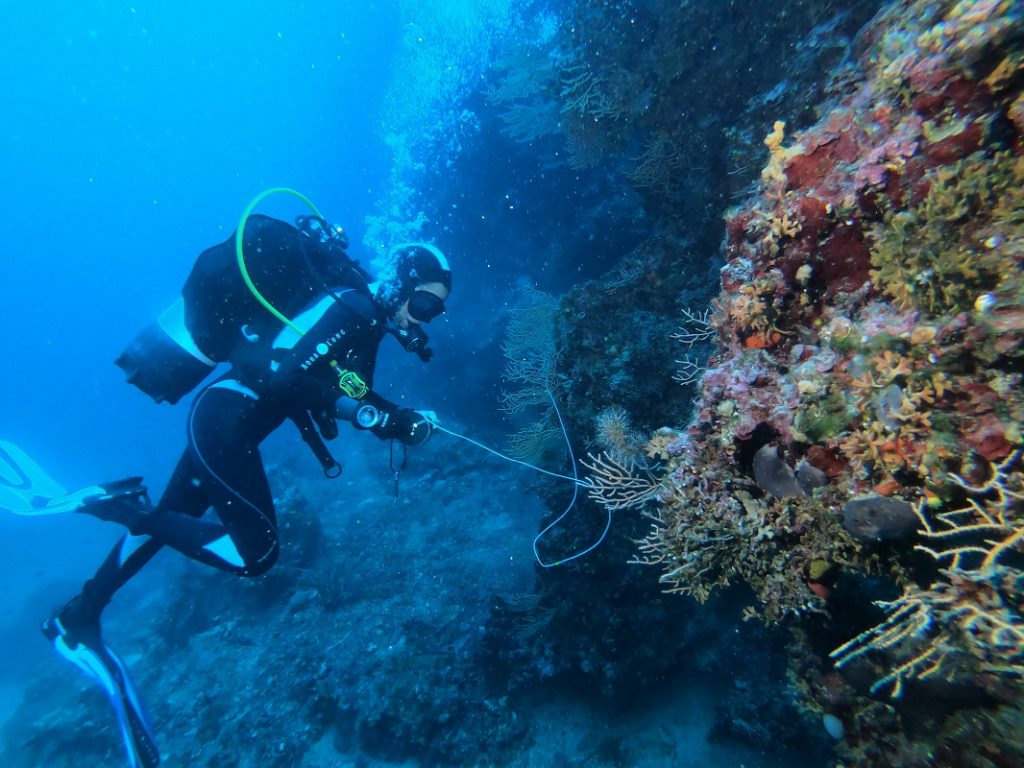
Protected areas are primarily intended to preserve biodiversity and numerous ecosystem services essential for human well-being. However, with the global increase in tourism, as well as the growth in awareness of the benefits that the interaction of man and nature provides for physical and mental health, the interest in outdoor activities in protected areas is also growing. Worldwide, protected areas are estimated to attract around eight billion visitors annually, generating approximately €550 billion in direct spending.
According to WDPA data, the number of protected areas in the world has been constantly growing since the 1960s. By 2021, a total of 284,144 terrestrial protected areas have been established, covering as much as 16.64% of the surface of terrestrial and freshwater ecosystems. Altogether 18,385 marine protected areas have been established, which occupy 7.74% of the ocean surface and coastal ecosystems. Many of them preserve “iconic” ecosystems, habitats of charismatic species, picturesque landscapes, and precisely these attractiveness make them unique tourist destinations.
The impact of tourism on protected areas
Tourism in protected areas can contribute to the preservation of nature and can encourage the sustainable development of the local community. It makes an economic contribution to the entire region in which it is located, primarily through visitors’ consumption for whom protected area is the reason for the visit. Visitors, for example, fund conservation by paying entrance fee, but also stimulate the economy of the entire surrounding area by using products and services during their visit. In addition to providing economic benefit, tourism in protected areas frequently encourages a positive attitude and support for protection in local community, and with visitors as well who get involved in educational activities, volunteer programs, etc. It also affects the quality of life of the local community by improving infrastructure, developing new skill, etc.

In addition to the multiple benefits that tourism in protected areas provides, it can also cause several negative impacts on the values of the area, the local economy, the local community, and the visitors themselves. Many protected areas today struggle trying to establish a balance between the natural resources protection and the need of visitors for such areas, who at the same time represent a potential source of income.
A balance between conservation and visitation
The growing number of visitors usually leads to increasing pressure on the natural values, for which the area was declared protected. Due to potentially negative impact on protected areas around the world, tourism and recreation are now considered to be among the primary threats to biodiversity. All tourism activities can potentially have a negative impact on the values of a protected area – whether it is a large infrastructure project to access the area or just a development of path for visitors.
Furthermore, tourism boosts the demand for additional tourist products and services, as well as basic ones (like security, health care, fire protection). Increasing demand increases management costs which can result in a higher tax burden for the local community. Greater taxes increase the prices of various goods and services, and they become excessively high and unaffordable for the local population. The increased number of visitors can disturb daily local activities, while visitor management can also impose some regulations that also affect the traditional local use. The seasonality of employment and the loss of identity through the commercialization of local traditions have a negative effect on society as such.
Nautical tourism in the Mediterranean – challenges for protected areas
And what is the situation with nautical tourism in the Mediterranean? The Mediterranean is the world’s main tourist destination. It is estimated that around 36 million Europeans engage in nautical activities in their spare time. They have about 6 million boats, 4,500 marinas and 1.75 million moorings at their disposal. Croatia’s charter fleet is among the largest in the world, and the number of vessels staying in the Adriatic during the tourist season already significantly exceeds existing capacities.

If nautical tourism is not properly managed, it can create enormous pressure on marine ecosystems and the protection of priority habitats. An example is Posidonia meadows, which are under great pressure from free anchoring. Precisely the strategic development of nautical tourism is a key precondition of sustainability. It includes limiting the number of boats and strengthening investments in ecological infrastructure and nature protection. Setting up ecological moorings that have a minimal impact on the landscape and marine habitats is extremely important, especially within protected areas, for the protection of the seabed, but also to ensure the safety of boaters. In order not to cover all natural bays with buoys, boats can be directed outside the area of Posidonia meadows, e.g. to sedimentary bottoms where meadows are not present or to depths below the lower edge of the distribution of these meadows (more than 30 m deep).
Although diving is often not perceived as a “harmful” activity, certain attractive underwater locations are under great pressure from diving tourism. Precisely, strictly protected areas are a proper mechanism for regulating certain forms of visitations, which can be allowed within such areas, but strictly controlled. Regrettably, strictly protected areas still occupy a small area in the Mediterranean, only 0.03%. Without the establishment of such areas, parks can hardly achieve their biodiversity conservation goals.

What to do and how to proceed?
Tourism will always have a certain impact on nature – even at low intensity and despite the efforts of protected area managers. Since visitors are attracted to protected areas by nature, which is inherently sensitive, it is crucial to assess in advance whether potential impacts are acceptable or not. Planned tourism uses the interest of visitors to protect more effectively natural and cultural heritage, boost the regional economy where the protected area is located, and improve the quality of life. Indeed, protected areas can be engines of sustainable development. But short-term economic benefit must not prevail over the nature conservation and local community needs.
Despite the numerous benefits, it is important to manage tourism responsibly in order to avoid and/or reduce negative impacts on protected areas.
Every individual, whether a visitor or a local, can contribute to the preservation of protected areas by their responsible behaviour. Being informed about the rules of conduct, supporting the local economy and participating in volunteer activities are ways in which you can actively contribute to sustainable tourism and the protection of natural beauty for future generations.
Spenceley, A., Schägner, J. P., Engels, B., Cullinane Thomas, C., Engelbauer, M., Erkkonen, J., Job, H., Kajala, L., Majewski, L., Mayer, M., Metzler, D., Rylance, A., Scheder, N., Smith-Christensen, C., Souza, T. B. and Woltering, M. 2021. Visitors count! Guidance for protected areas on the economic analysis of visitation. United Nations Educational, Scientific and Cultural Organization, Paris, France and German Federal Agency for Nature Conservation, Bonn, Germany
Eagles, Paul F.J., McCool, Stephen F. and Haynes, Christopher D.A. (2002). Sustainable Tourism in Protected Areas: Guidelines for Planning and Management. IUCN Gland, Switzerland and Cambridge, UK. xv + 183pp.